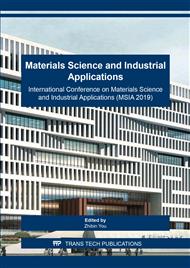p.166
p.172
p.179
p.185
p.191
p.198
p.209
p.215
p.223
Influence of Cementitious Capillary Crystalline Waterproofing Material on the Water Impermeability and Microstructure of Concrete
Abstract:
The main objective of this study is to investigate the effect of cementitious capillary crystalline waterproofing (CCCW) material on the water impermeability and microstructure of concrete. The water impermeability of concrete covered with or without CCCW material was tested according to the Chinese standard GB 18445-2012. The results indicate that concretes coated with CCCW material showed much higher water impermeability than blank ones, and the ratio of water impermeability pressure between them reached 275. The samples obtained in various depths of hardened cement paste specimens with or without CCCW coating were analyzed through scanning electron microscopy (SEM) and thermogravimetry-differential scanning calorimetry (TG-DSC), to study the differences in microstructure and hydration products. The results present that after a 28-day standard curing, there were lots of ettringite crystals and CaCO3 formed in the paste in 1 cm from the coating, but the action depth of the CCCW coating could not reach 3 cm. The ettringite and CaCO3 is precipitated in the pore structure of cement matrix and filling the voids, which leads to the significant enhancement in water impermeability.
Info:
Periodical:
Pages:
209-214
Citation:
Online since:
May 2019
Authors:
Price:
Сopyright:
© 2019 Trans Tech Publications Ltd. All Rights Reserved
Share:
Citation:


